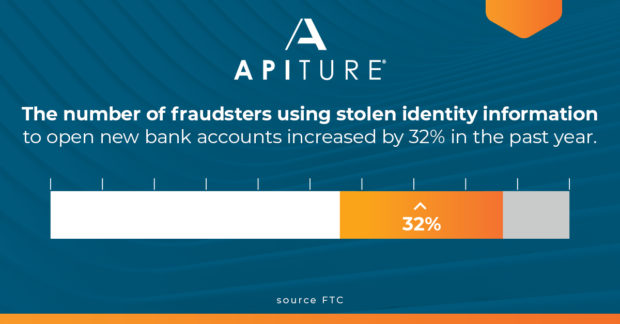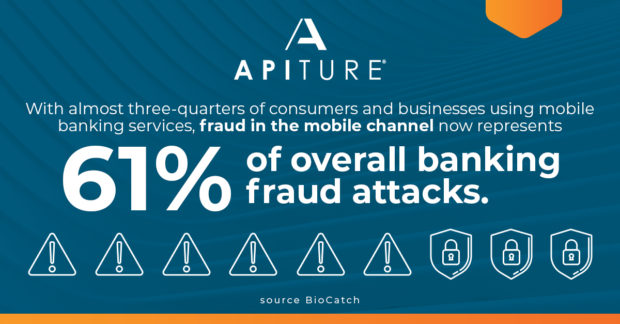Consumer fraud losses totaling more than $10 billion in 2023 — up 14% over the past year — should be a wake-up call to community banks and credit unions that fraud is a serious threat. Unfortunately for affected financial institutions, fraud’s true cost can be up to four times the cost of a fraudulent transaction itself. According to LexisNexis, every dollar lost to fraud actually costs U.S. financial institutions $4.23 when you consider costs incurred to investigate the claim, legal and other fees and external recovery expenses.
To curtail these costs, it is more important than ever to combat fraud before funds are exploited — and innovations in proactive fraud detection technology can help. With these tools and a proactive strategy, you can protect your institution: Not only from financial losses but also from reputational damage and regulatory scrutiny.
Preventive Measures That Work
Today’s online and mobile banking solutions employ various methods to thwart fraudulent activity as users access banking functions across the platform. Unlike batch or next-day alerting, real-time fraud detection solutions help you identify fraud before funds leave your financial institution.
Your financial institution can put proactive fraud systems in place by first establishing barriers and safeguards at various points within your processes and systems. Use internal controls — measures and mechanisms you employ within your technology framework — and invest in a modern proactive anti-fraud tool to safeguard your assets, prevent fraudulent activities and detect and respond to fraud when it occurs. For best results, incorporate the following technology into your digital banking platform:

Don't Miss The Financial Brand Forum!
Learn how to tackle the biggest challenges in banking from the industry's brightest minds at The Financial Brand Forum — three days packed with the latest trends, fresh ideas, and disruptive innovations rocking financial services.

How Artificial Intelligence Can Help Fight Fraud
Fraud losses signify a serious threat for financial institutions today. Learn how you can use artificial intelligence to help reduce fraud losses.
Read More about How Artificial Intelligence Can Help Fight Fraud
Identity verification: During digital account opening, each applicant must undergo a rigorous identity verification process to include Know Your Customer (KYC) and anti-money laundering (AML) regulations. When a person and their ID documentation are not physically present, an identity verification tool serves as the first layer of defense against identity fraud. By using such methods as biometric verification, face recognition, or digital ID document verification, identity verification can flag if an applicant is a fraudster, criminal, bad actor, or attempting a scam.
Positive pay for checks and ACH: These preventive tools validate details about all check or ACH transactions to flag discrepancies. Examples include:
Check positive pay: an automated tool that matches checks issued by companies with those that are presented for payment. The dollar amount, check number and payee must match for the check to be cleared for payment. When the tool identifies a suspicious check, your institution will send it back to the issuer for examination.
Reverse positive pay: a tool that allows businesses to review checks one day after they are presented for payment to identify fraudulent items and return them unpaid. It does not require businesses to send in a list of issued checks, resulting in less upfront work.
ACH positive pay: this tool helps businesses monitor and stop incoming unauthorized ACH transactions. Businesses can maintain a list of allowed companies in support of future transactions, as well as block unauthorized originators or set parameters for transactions like amount limits, date ranges and frequency.
Real-time transaction monitoring: Enable this feature within your bill pay solution. Round-the-clock monitoring, including 24 x 7 x 365 fraud detection and real-time reporting, can improve your ability to prevent, detect and respond to fraud situations. When fraud is suspected, this feature allows your financial institution to issue fraud alerts and cancel or freeze account activities.
Fraud detection solution: Proactive fraud detection solutions work within your digital banking platform to detect and immediately respond to potentially fraudulent scenarios such as account takeover attempts, fraudulent account or loan applications, payments fraud and money laundering activity. The solution constantly gathers, analyzes and reports real-time insights on evolving cyber risk, allowing you to block suspicious activity, execute step-up authentication and route anomalies to analysts for further investigation.
The best options will include an intuitive dashboard that provides a snapshot of all digital banking activities.
Using AI Technology to Fight Fraud
Beyond specific tools available to help with fraud detection, financial institutions are also looking to artificial intelligence (AI) to predict risky situations and provide proactive alerts. In fact, banks or credit unions that use AI or machine learning technologies had 30% fewer transactions that resulted in fraud losses than institutions that do not use these technologies. AI can help your proactive fraud detection efforts by:
Recognizing patterns: AI algorithms can analyze large amounts of data to identify patterns and anomalies that may indicate fraud. Going even further, AI technology leverages machine learning algorithms to learn from new data and continue to improve methods for detecting emerging fraud patterns.
Providing real-time detection: If AI technology is employed to analyze transactions and customer behavior as it occurs, your financial institution has a better chance to identify and stop fraud before funds leave the account.
Reducing false positives: AI technology goes a step beyond traditional fraud detection tools to more accurately detect legitimate fraud situations.
Incorporating automation: Automating routine fraud detection tasks frees up human analysts to focus on riskier, more complex fraud cases.
Integrating with other data sources: By bringing together data sources like transaction history, customer demographics and behavioral data, AI technology provides a more comprehensive view of user activity than examining isolated data.
Using natural language processing (NLP): Incorporating NLP to analyze text data, such as email or chat conversations, can help your institution identify potentially suspicious phishing or social engineering scams.
Reducing costs: By reducing the number of fraudulent cases, AI technology can save time and money, as well as protect your financial institution’s reputation.
Use Data to Boost Prevention Efforts
Employing proactive detection can be your best defense against fraud losses. And when you incorporate technology that helps streamline fraud detection efforts, your institution can more effectively stop losses before they happen.
Use data from proactive fraud detection tools to pinpoint when or where fraud will most likely happen — for instance, late at night — or identify transactions that lead to bad actors or money mules. Ultimately, by incorporating certain fraud prevention scenarios into your policies, you reduce risk. Some scenarios include:
- Initiating a hold on late-night account updates for verification
- Restricting access to accounts following suspicious account updates
- Holding wire/ACH requests for verification for suspicious external accounts
- Isolating accounts that are funded from known money mules
- Stopping a one-time PIN from going to a recently added or updated phone number
- Holding for verification any payments scheduled at an unusual time or those that exceed a specified amount
- Freezing accounts with suspicious patterns or deposits and withdrawals

Ensure a Proactive Culture
Beyond implementing technology pieces critical to bolstering fraud prevention, in order to succeed in being proactive, you will need to secure top-down commitment from your organization. For best results, gain senior-level support for your program and designate an individual to lead your fraud prevention efforts, assigning them defined responsibilities and the necessary authority to act.
Along with the right leadership, establishing plans and processes to monitor and evaluate your program’s effectiveness are an important next step. Set your financial institution up for success with the following best practices:
Develop an incident response plan: To minimize losses, be prepared to respond to fraud quickly and effectively with an Incident Response Plan. Your plan should include steps to investigate the incident, recover lost funds and prevent similar incidents from happening in the future. Once the plan is in place, conduct regular drills to test the effectiveness of your response.
Establish effective internal controls: Your IT department can assist with fraud efforts by mandating strong passwords, conducting employee training and establishing firewalls that allow for proactive prevention.
Educate account holders about fraud: Consumers and businesses need to be informed about common fraud schemes, as fraud patterns constantly change and attacks become more sophisticated. Advise your account holders about ways to protect their accounts and establish a feedback loop to gather information about ongoing fraud issues.
Ensure regulatory compliance: Various legal requirements, such as KYC and AML, exist today to reduce instances of fraud. Familiarize yourself with the current federal regulations and standards around fraud prevention to ensure your institution is compliant.
Proactive Prevention is the Gold Standard
Even if your financial institution has basic measures in place to stop fraud, it is still likely a concern for you and your account holders. However, with an investment in proactive fraud defenses, you have the ability to stop fraud before it happens and reduce direct losses for your institution.
A proactive fraud detection strategy, paired with technology that offers real-time monitoring and notification, can protect your account holders from fraudulent situations before your customers or members are impacted. When you also layer in a proactive strategy – including an Incident Response Plan, internal controls and other preventive measures – you protect your position as a trusted provider — ultimately bolstering the user experience while protecting your bottom line.
Contact Apiture to learn about DefenseStorm, our partner for real-time fraud prevention and other tools you can use to develop a proactive fraud prevention strategy.







